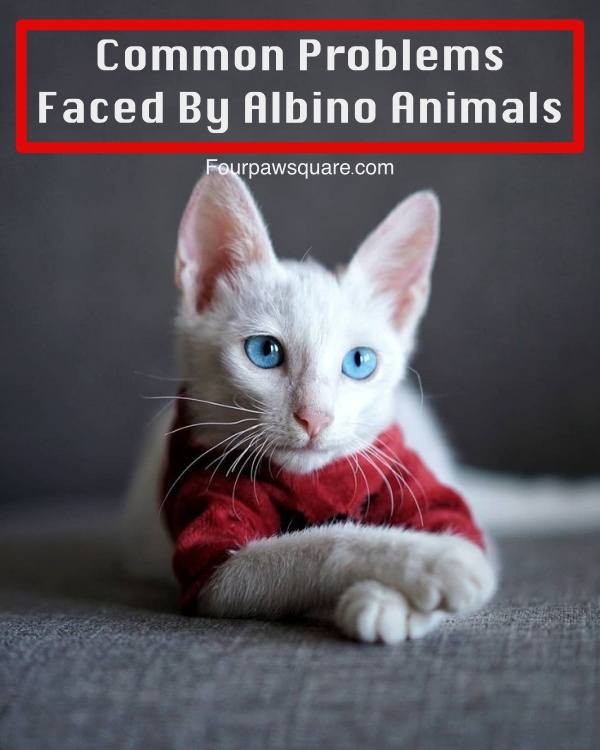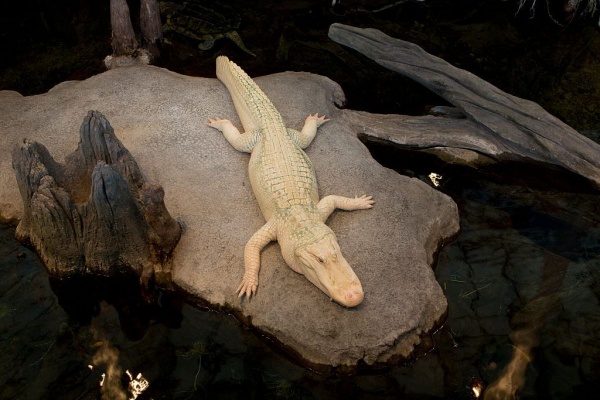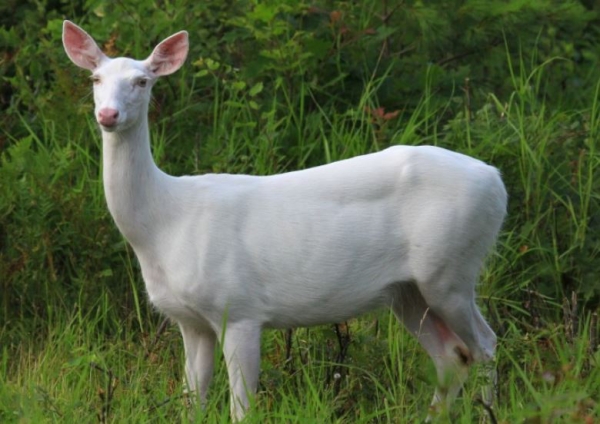Although hard to find, albino animals have been spotted everywhere in the seas to the skies. These unique creatures have a partial or complete loss of pigmentation; hence their pale skin tone can be easily compared to other members of their species. Even though the birth of an albino animal is considered an auspicious event in some cultures, research suggests that some albino animals have difficulty in the wild. Albino wildlife faces different obstacles in nature. Let us take you through the Common problems faced by Albino animals.

1. Albino Alligators
They often have poor eyesight that puts them at a disadvantage when hunting for food and avoiding danger. In some cases, they have trouble finding a mate, and their inability to camouflage themselves makes them vulnerable to predators. For instance, albino alligators make such an obvious target for predators that they’re often eaten before they reach adulthood.
2. Squirrel
Albino animals and other unusually pale wildlife are also vulnerable to poachers looking to capitalize on the booming demand for exotic pets or products derived from these creatures. An animal can be completely albino (pure albino) or have leucism. Pure albino animals have pink eyes, nails, skin, and scales. The pink coloration originates from blood vessels showing through the skin, and animals with leucism may have lighter coloration patterns.
3. Snake
Aside from appearance, these animals often have problems related to albinism, such as issues with eyesight. Melanin helps eye development, so without it, retinas, irises, optic nerves, and eye muscles may not form properly. This can cause problems with focusing, tracking, and depth perception in the albino critter. Since melanin helps protect skin from sunlight, lacking the pigment means a higher chance of developing melanoma. This causes trouble for sun-basking species, often leading to death for the albino animal.Birds with albinism also have a difficult time finding a mate. While many species attract a potential partner with bright colors, a white bird will likely get rejected. While a bright white animal may make you stop and stare, what about an all-black variation? This coloration known as melanism is due to increased melanin in the animal’s skin and fur. This is a hereditary condition found in species, including reptiles, amphibians, and mammals.
4. Frogs
A bright white animal in a brown and green environment can stand out. This may cause the critter to be spotted more easily by predators due to the disruption of cryptic coloration. Cryptic coloration is the coloring or markings animals have to blend into their environment. A Baby deer have their white spots, an example of cryptic coloration — to blend in with the sunspots shining through to the forest floor. However, many albino animals are not being recognized as prey due to their strange coloring.Some amphibians have a different color battle. There have been instances of frogs appearing blue. This is the result of genes that caused the frog to be brown or green mutating. The mutation causes different wavelengths of light to be filtered out, causing a blue-looking bullfrog.
5. Sugar Glider
An albino is an organism that cannot produce the pigment melanin. Now melanin is responsible for the coloration of scales, furs, hair, and skin. So the albino animals do not have any variation of color, and they end up being only white. Albino pets are more sensitive and have some health issues that should be taken care of properly.
6. Koala
Melanin is responsible for different color pigmentation in animal skin and protects and filters skin from the harmful UV sun rays. Sensitivity to sunlight is one of the common problems faced by Albino animals, and they require extra protection from the sun’s rays. So unless they have a very thick coat of fur, do not allow them to roam under the sun. Even if they are furry, try to keep them indoors because there is nothing better than being slightly more cautious. You can use sun-screen, preferably children’s sun-screen, if prolonged sun exposure is unavoidable for added protection.
7. Hedgehog
As their skin is sensitive to sunlight, their eyes are also sensitive to bright light. Especially the blue or pale green or red-eyed albino animals cannot withstand bright light. They don’t have the pigments that screen the light entering the eye. Thus, in too much light, the albinos can even become blind. Even in lower light, their visual accuracy is not good, and there is decreased binocular vision and perception of depth in them. For a shorter remedy, use goggles to protect their eyes.
8. Cat
Albinism has a strong connection with being deaf. Especially albinos with white fur and one blue eye or one blue and one green eye are more susceptible to deafness. A popular pet dog breed- Dalmatian, who is an albino, is majorly found to be deaf. And if you have heard of White Paint Horses, they are also partially deaf, and the same goes for the albino cats.
9. Mice
Albino and nearly albino pets are likely to lack melanin (pigments) in the brain also. They lack some critical receptors in their brain due to the absence of melanin and thus become victims of neurological problems. The famous white mice, being used in laboratory research, are such affected albinos. The albino Dalmatians and paint horses are also among these highly unpredictable pets due to neurological problems.
10. Deer
One of the Common problems faced by Albino animals are they acquire lesser immunity. And any small disease can get dangerous due to low immunity. Moreover, they are prone to skin cancer and often lose all of their hair. They also have problems regarding their overall development of the body. And the worst part is albino animals generally have a shorter span of life.










